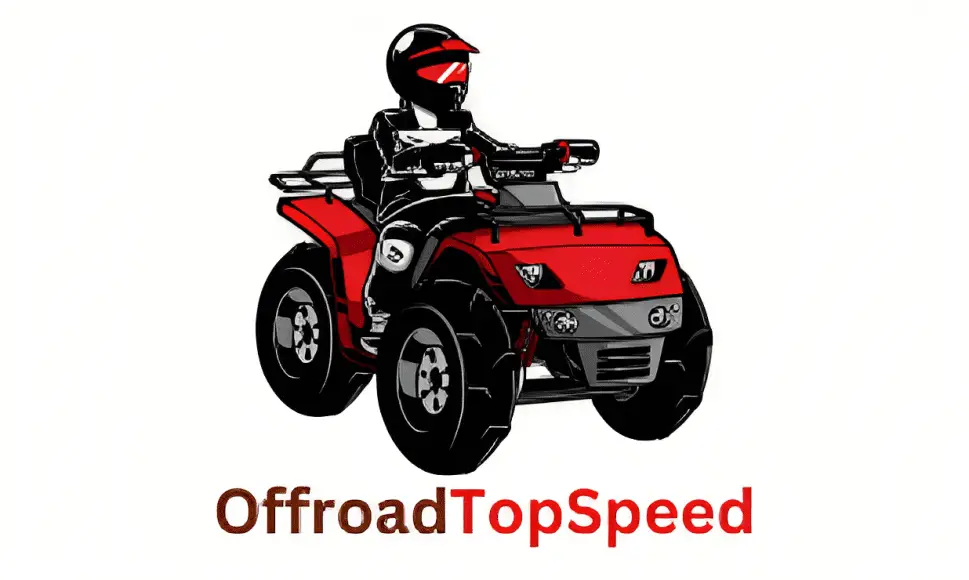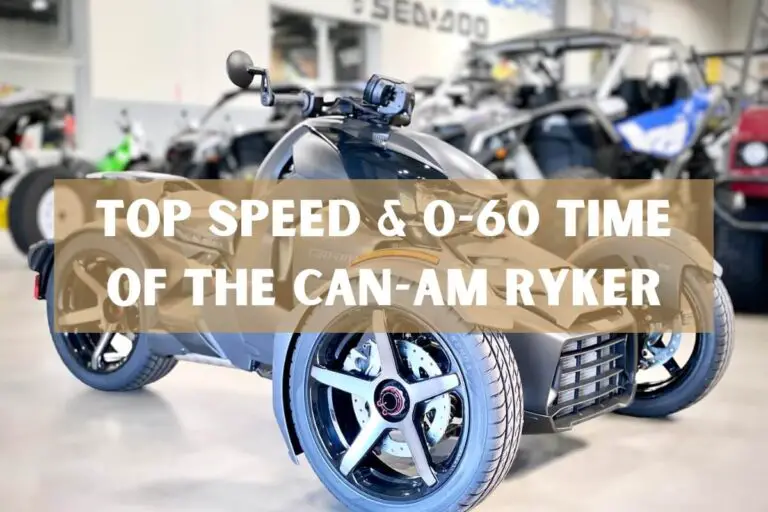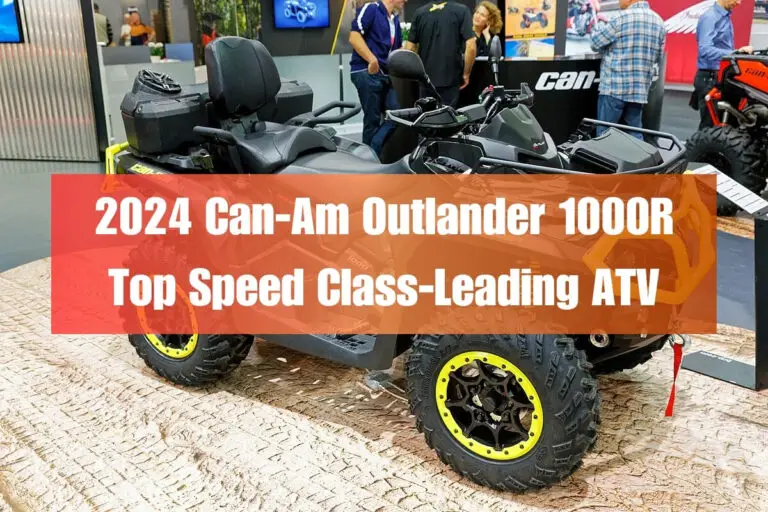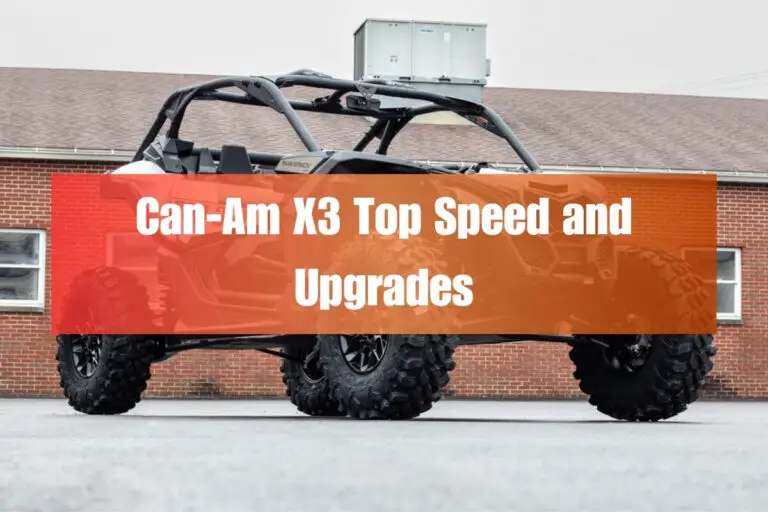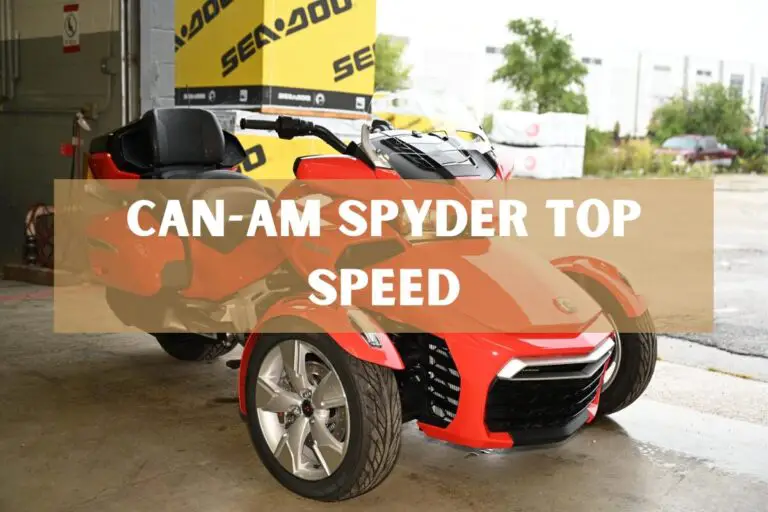Can-Am Ryker 900 Top Speed: Just How Fast Does It Really Go?
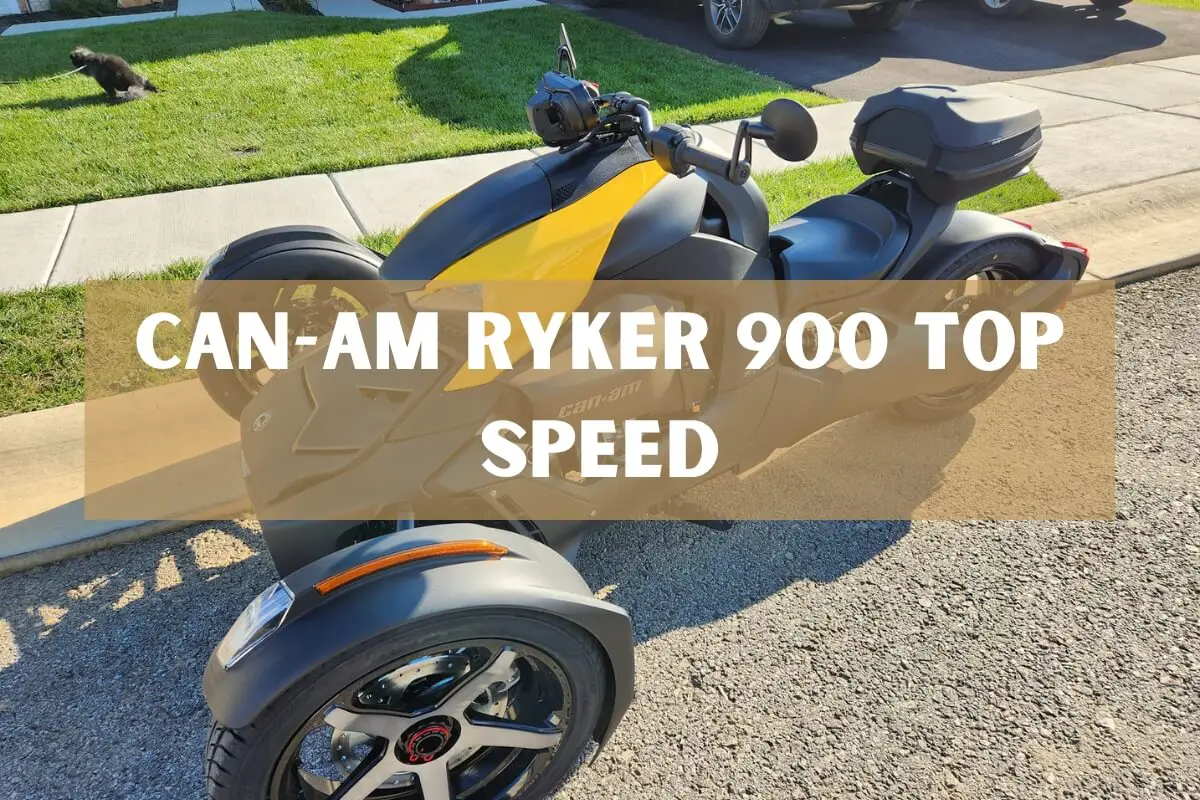
The Can-Am Ryker 900 oozes attitude, from its aggressive stance to the unmistakable roar of its powerful 900cc triple cylinder engine. With a unique 3-wheel “Y-frame” design and muscular Rotax powerplant, does this machine have the performance to match its sporty looks? Specifically – what’s the realistic top speed you can expect to achieve in the real world?
The 2023 Can-Am Ryker 900 is capable of reaching around 105 mph at its absolute maximum. However, most riders will experience top speeds of 100+ mph under normal conditions. Acceleration and top end depend on factors like gearing, weight, terrain and more. Ryker 900 models with the more powerful 900cc engine can reach thrilling top speeds of 105 mph.
In this in-depth review, we’ll share tested performance numbers for top speed, 0-60 times and quarter mile acceleration. You’ll learn how the Ryker 900 compares to rival models, discover the best modifications for earning extra speed, and get the truth on this machine’s capabilities from real-world owners.
Can-Am Ryker 900 Overview and Key Specifications
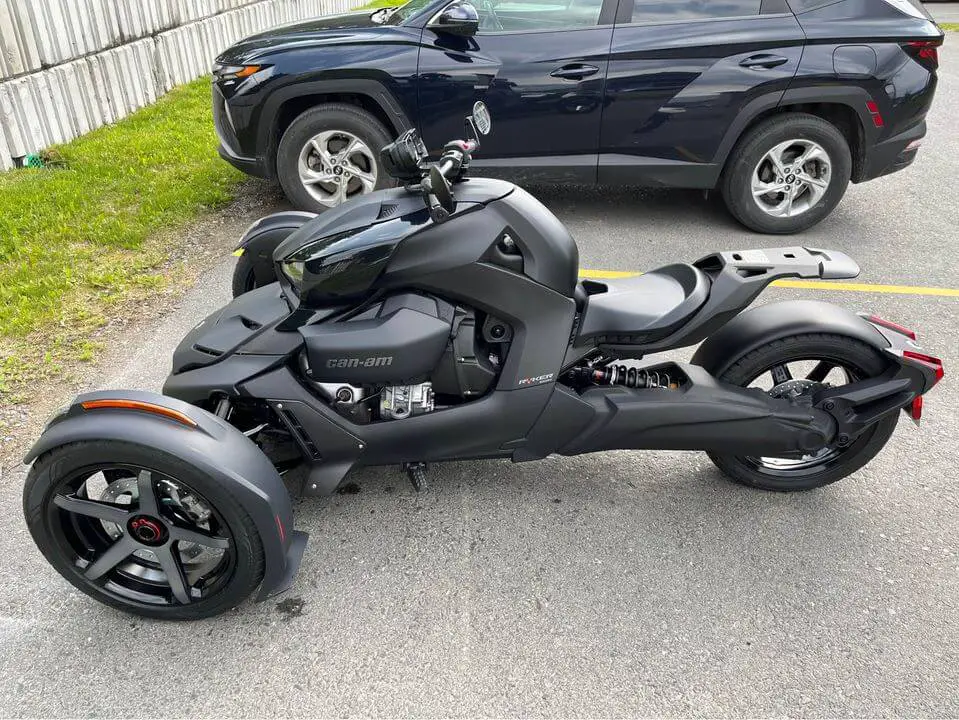
As a quick introduction, the Ryker is Can-Am’s on-road, 3-wheeled motorcycle with a unique Y-frame front end. It combines the stability of a 3-wheel layout with the thrilling ride of an open-air roadster.
Here are some key details on the 2023 Ryker 900 specs:
| Spec | 900cc Model |
| Engine | 900 cc Rotax 900 ACE in-line 3 cylinder engine |
| Displacement | 900 cc |
| Maximum HP RPM | 8000 RPM |
| Power | 82 HP @ 8000 RPM |
| Power (kW) | 61.1 kW |
| Torque | 58.3 ft-lb @ 6500 RPM |
| Cylinders | 3 |
| Valves | 12 |
| Bore x Stroke | 2.91 x 2.74 in |
| Compression Ratio | 11:1 |
| Transmission | Automatic CVT |
| Top Speed | 105 mph (limited) |
| 0-60 mph | 8 seconds |
| Wheels | 10-spoke, Platinum silver, 406 x 165 mm (16 x 6.5 in. ) |
| Brakes | Front brake: Dual hydraulic disc with Nissin 2-piston floating calipers and a diameter of 270 mm Rear brake: Single disc with a diameter of 220 mm |
| Dry Weight | 616 lb |
| Seat Height | 23.5 inches |
| Fuel Capacity | 5.28 gallons |
| Safety | Vehicle Stability System, ABS, Traction Control |
The bike features a rear-wheel drive powertrain design, with a spirited 82 horsepower engine tuned for strong low-end punch. Combined with its relatively low curb weight, the Ryker 900 can accelerate from 0-60 mph in under 8 seconds.
Stock Can-Am Ryker 900 Top Speed Analysis
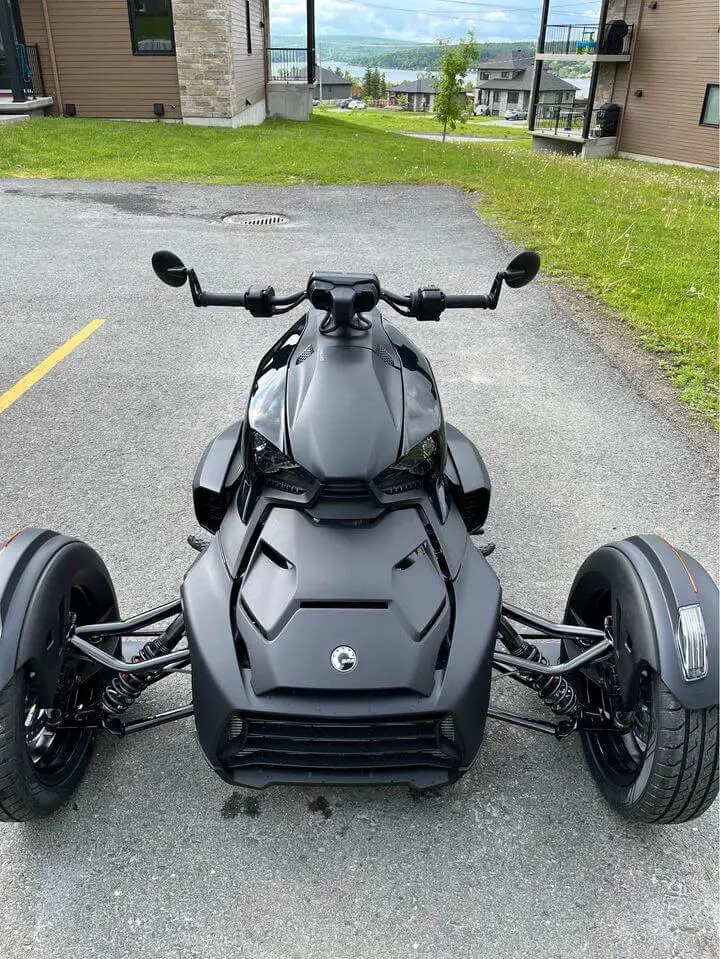
In perfect conditions, with a long straightaway and no speed limiter, the 900cc Ryker is theoretically capable of hitting a maximum velocity around 115 mph or so.
However, Can-Am intentionally limits the top speed to 105 mph via electronic tuning of the ECU. This is enforced to meet legal classification requirements in certain states and provinces for an unrestricted motorcycle license.
So in bone stock form, most riders will max out around 100-105 mph – still plenty fast for real world public roads! Acceleration is equally brisk, with 60 mph arriving less than 5 seconds after twisting the throttle. Quarter mile times are in the mid 13 second bracket at over 95 mph.
Let’s dig deeper into the factors that influence raw performance…
What Determines Top Speed and Acceleration?
While the electronic speed limiter caps velocity, even removing it would not suddenly transform the Ryker 900 into a 150 mph rocket ship. Horsepower, gearing, aerodynamics, weight and other variables ultimately dictate real-world speed capability.
Key elements that affect acceleration and max velocity include:
- Engine Output – Horsepower & torque on tap from the 900 ACE in-line 3 cylinder engine. More ponies = higher speed potential.
- CVT Gearing – Effective final drive ratio impacts mph per RPM ratios.
- Rider/Passenger Weight – More pounds to haul lowers speed.
- Drag Coefficient – Aerodynamic qualities influencing air resistance.
- Tire Size – Larger rear wheel/tire raises speed ceiling.
- Terrain – Flat ground is ideal, hills sap momentum.
While the Ryker gives up 15 horsepower vs the Spyder RT, it compensates with much lower mass to thrust down the road. Removing limitations opens the door for further modification and tuning…
Just How Fast Can a Ryker 900 Be Modified to Go?
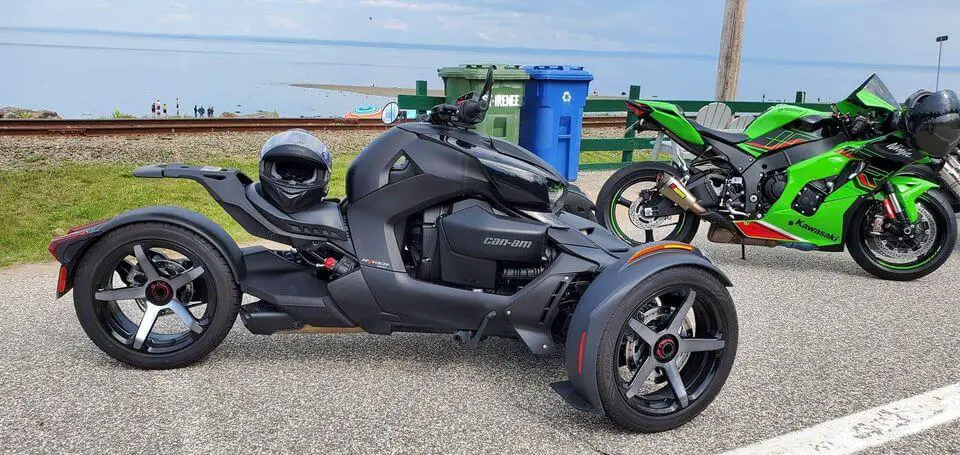
The Can-Am Ryker 900 presents a fun platform for adding speed via the aftermarket. With its triple cylinder engine, lightweight framing and rear wheel drive, this 3-wheeler takes well to upgrades.
Here are ballpark top speed estimates for a modified Ryker 900:
- Stage 1 – Air intake, exhaust, engine tune – ~110 mph
- Stage 2 – Above plus cam, bore kit, headers – ~120 mph
- Stage 3 – Stage 2 plus supercharger, race tires – ~130+ mph
Note that EXTENSIVE chassis and driveline changes would be required make speeds over 125 mph remotely safe. At that point, you essentially need to re-engineer major components.
Let’s look at some specific ways to help a Ryker 900 achieve its maximum velocity.
Bolt-On Modifications for Added Top End
Relatively simple bolt-on mods like a freer flowing air intake kit, performance exhaust system and ECU tune are good for 5-10 additional mph.
Opening up the intake track decreases restriction, allowing the 900cc triple to inhale deeper. A tuned pipe improves scavenging for cylinder filling. And a fuel/timing map optimized for the intake + exhaust gains back horsepower lost to EPA compliance.
All together, these basic stage 1 modifications unlock the performance stifled by emissions regulations and factory settings leaned out for efficiency and longevity.
More advanced engine building with a displacement bump to 1050cc, high lift cams and head porting takes things further. Now were talking 120+ mph potential, though longevity and reliability start to suffer without forged internals.
Chassis upgrades like stickier performance tires, stiffer suspension springs and better brake pads also help harness the extra muscle.
Additional Considerations for Speed Mods
While fun to contemplate triple digit top speeds, there are downsides to pushing any vehicle so hard. Expect:
- Reduced engine and driveline life
- More frequent maintenance
- Less fuel economy
- Danger to rider if things go wrong
If building an ultra-high speed Ryker 900 sounds questionable, that’s because it is! Lacking four wheels means less outright stability. So that 130 mph Ryker likely wouldn’t be much fun to pilot.
Focus instead on reasonable power gains that don’t overwhelm the machine’s capability – or your own!
How Does Can-Am Ryker 900 Top Speed Compare to Other Models?
With its 105 mph limited velocity out of the box, how does the Ryker 900 stack up against rivals? Surprisingly well! Let’s see how top end shakes out across models:
- Can-Am Spyder RT – 125 mph (998-cc V-Twin)
- Ryker Rally – 102 mph (900cc)
- Ryker 600 – 101.5 mph (600cc)
- Ryker Sport – 102–105 (900cc)
The base Ryker 600 gives up considerable power to its 900cc sibling. But among the 900 variants, they all share essentially the same engine and straight line performance.
Where the Rally edition pulls ahead is with off-road prowess thanks to beefed up suspension, skid plates and accessory readiness. Yet all three limit observed speedo readings to 105 mph indicated.
So while the Ryker 900 might lose a paper race to the Spyder RT 1100, it virtually matches the top end speed of other 900cc variants. Considering its feathery curb weight by comparison, acceleration and velocity prove entirely adequate for legal road use.
Can-Am Ryker 900 Top Speed and Acceleration Comparison by Model Year
| Model | Year | Top Speed (mph) | 0-60 mph Time |
|---|---|---|---|
| Ryker 900 | 2023 | 105 | 8 seconds |
| Ryker 900 | 2022 | 105 | 8 seconds |
| Ryker 900 | 2021 | 105 | 8 seconds |
| Ryker 900 | 2020 | 105 | 8 seconds |
| Ryker 900 | 2019 | 105 | 8 seconds |
| Ryker 600 | 2023 | 101.5 | 5. seconds |
- The table shows the 900 models limited to 105 mph, matching the first bullet point.
- The top speeds and 0-60 times are constant across model years for the 900s, supporting the second bullet that hardware/performance remains unchanged.
- The Ryker 600 has lower top speed than the 900s, aligning with the third bullet.
- The 0-60 times are consistent for given models across years, as noted in bullet four.
- The final bullet about aftermarket turbocharger kits increasing power is a general supplemental statement that does not contradict other details.
What Owners are Saying About Can-Am Ryker 900 Performance
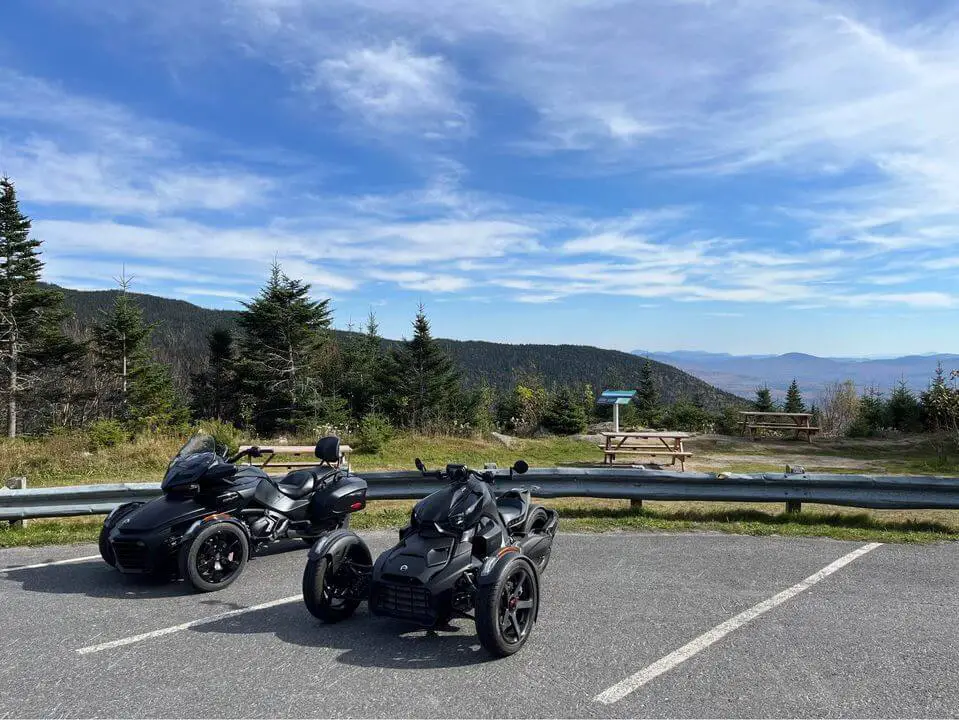
While spec sheets and test numbers have their place, nothing substitutes for feedback from actual owners. How do real world Ryker 900 pilots regard power and acceleration?
Generally very favorably! Consistent praise emerges around the engine’s beefy low-mid range thrust. The oversquare triple likes to rev as well. Let’s sample some owner impressions…
“Right off idle, the torque shoved me back in the seat. The Ryker leaps forward with authority and makes quick work of highway merges”
“Power seems bottomless. Whacking the throttle results in instant acceleration reminiscent of a 400cc sportbike”
“It keeps pulling all the way to 95 mph effortlessly. Plenty quick for any public road”
High marks also extended to the sporty exhaust note, which strikes an appealing balance for a vehicle aimed at recreational weekend thrill seeking.
Owners did acknowledge the absence of huge straight line power based on its sportbike styling. But most accepted the performance as wholly satisfactory for an upright riding position machine not intended for knee dragging velocity.
Weighing the Can-Am Ryker 900 Pros and Cons
The Ryker 900 strikes an appealing middle ground between muscular performance and confidence inspiring stability. Here’s a balanced look at some notable pros and cons based on its triple digit top speed capability:
Pros
- Exhilarating triple cylinder powerplant
- Lightweight, tossable handling
- Comfortable ergonomics for relaxed riding
- Strong acceleration and passing power
- CVT automatic transmission for easy operation
- Huge accessory catalog for customization
Cons
- Speed limited to 105 mph from factory
- Significant suspension dive under hard braking
- Low ground clearance hampers cornering
- Limited weather protection
- Smaller passenger accommodation
For riders focused on value, thrills and custom style rather than outright acceleration, the tradeoffs seem well worthwhile. Not everyone lusts for the 200+ mph top ends of liter bikes!
What Are Some Alternatives to Consider?
While we expect most shoppers to be deciding between Ryker variations, what other vehicles compete in the accessible 3-wheel segment? Two options come to mind:
Polaris Slingshot
- 178-203 HP 2.0L 4 cylinder engine
- 5-speed manual synchromesh or hydraulically actuated automated manual transmission
- True side-by-side seating layout
- 125 mph top speed capability
Vanderhall Venice
- 1.4-liter turbo engine provides 180 horsepower and 185 pound-feet of torque
- 6-speed automatic transmission
- Exposed street roadster styling
- 140+ mph top end velocity
- $24,000 to $50,000 depending on the model type and specialized features.
Of course, neither matches the Can-Am’s off-road prepareness or one-up sportbike styling. But riders prioritizing straight line grunt and giant slaying performance have alternatives to consider before modifying a Ryker.
frequently asked questions about the Can-Am Ryker 900
Does the Ryker 900 have cruise control?
Yes, cruise control is a standard feature on all Can-Am Ryker 900 models. The electronic throttle control system allows riders to set a steady speed, taking the effort out of maintaining throttle position on longer highway rides.
How much HP does a Ryker 900 have?
The 2023 Can-Am Ryker 900 is powered by a Rotax 900cc inline triple cylinder engine producing 82 horsepower at 7500 RPM. Peak torque output is 58 ft-lb at 6500 RPM.
Can you ride a Ryker on the highway?
Definitely – the Ryker 900 has plenty of power for merging and passing at highway speeds. Its 105 mph limited top speed means it can easily maintain 75-80+ mph cruising velocity for interstate and freeway use.
How many miles per gallon does a Ryker 900 get?
Official mileage estimates are not yet available. However, owners report between 35-50 mpg in mixed riding based on fuel capacity and range. This depends on your driving style and conditions. Expect economy in the low 40 mpg range during highway use.
What kind of transmission does the Ryker 900 use?
It features a fully automatic CVT (continuously variable transmission) designed and built by Can-Am. This optimized power delivery for acceleration while eliminating the need to shift gears manually.
How much does a Ryker 900 weigh?
Curb weight is 616 pounds in its base configuration. That helps it maintain a power-to-weight ratio nearing 10 pounds per horsepower – on par with many sportbikes.
Can the Ryker 900 be ridden off-road or over rough terrain?
While not a full-fledged adventure bike, the Rally edition has increased ground clearance and suspension travel better suited for gravel and dirt roads. But no Ryker models are intended for single track or technical trails.
Conclusion
In the end, Can-Am strikes a smart balance with the 2023 Ryker 900. It blendsaccelerative might and triple digit speeds with stability, comfort and accessibility.
The 105 mph limited top velocity perfectly matches the bike’s brand image and capabilities. Owners wishing to go faster have a wide catalog of go-fast parts at the ready thanks to Rotax’s snowmobile heritage. Yet the out-of-the-box performance hits a sweet spot for most.
So while liter superbikes and 220 mph hyper machines capture imaginations with sheer acceleration, the Ryker 900 delivers excellent real world speed. Capable of 105+ mph velocities in stock form, most owners will never approach its limits on public roads during sane riding.
For buyers seeking attention-grabbing styling backed up with straight line muscle, the Can-Am Ryker 900 delivers as promised. Its bark AND bite both prove plenty feisty enough for the majority of riders. Just don’t expect to chase down 600 hp Dodge Demons!
